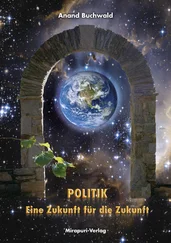One dominant representational strategy operating within the text is infantilization. On the one hand, young Kim is contrasted to the old lama. But a closer reading shows Kim to be the real guardian and caretaker as he is practically wise and the lama is childlike in worldly matters. The lama writes in "clumsy, childish print" (13) and follows Kim's instructions obediently and "simply as a child"
(20). Kim asserts his own importance for the lama when he says to him: "Was there ever such a disciple as I?… All earth would have picked thy bones within ten miles of Lahore city if I had not guarded thee" (71). Yet in times of crisis, such as when Kim is caught by two British regimental priests and is forcibly enrolled for formal schooling, the lama shows awareness of worldly matters and volunteers to act as Kim's guardian and insists on paying for the cost of his education.
The lama's wisdom in spiritual matters is of course unparalleled and compared favorably with Indian priests of all sorts. He speaks like a "scholar removed from vanity, as a Seeker walking in humility, as an old man, wise and temperate, illuminating knowledge with brilliant insight" (232). Ultimately, the lama finds his "fountain of wisdom" (the "river of the arrow") in his affection for Kim and 'saves' Kim from his illness through his meditation even though Kim has now been trained to be a British spy. He says, "Son of my Soul, I have wrenched my Soul back from the Threshold of Freedom to free thee from all sin-as I am free, and sinless!" (313). Tibet comes to the aid of the West to rejuvenate it spiritually, even as the West retains its secular dominance.
The benign figure of the lama, the one with a "loving old soul" (207), does not preclude Kipling from expressing the general disagreement with Tibetan religion that was prevalent among Europeans at the turn of the twentieth century. For instance, Kipling's lama figure anguishes that the "Old law"-primitive Buddhism- "was not well followed; being overlaid… with devildom, charms, and idolatry" (15).
Even though some might find in the figure of Teshoo Lama a charitable depiction of an "Oriental" (see Hopkirk 1997), he is seen as childish, unthinking, and incapable-to the point of self-destruction-of existence in the real world. This portrayal of the lama results from simplistic idealization and ambivalence. From his early function as a father figure for Kim, he gradually reveals his practical inadequacies, as his childlike dependence on Kim grows more explicit. Later in the novel, as compared to the Western patriarchal figures of Colonel Creighton and Father Victor-the European men combining power and "worldly" knowledge-the lama's virtue and behavior increasingly appear gendered as feminine and thus ineffectual (see Sullivan 1993). Kim's search for identity and his love for the lama are both mediated by the ruling structures of power. [38]
The Dalai Lama
Over the past century, the Tibetan lama figure has come to be crys-talized in the figure of the Grand Lama, the Dalai Lama. [39]The person of the present fourteenth Dalai Lama, Tenzin Gyatso, has been instrumental in this. The Dalai Lama's contemporary image has moved beyond the confines of images such as Kipling's fictitious "Teshoo Lama." He is not only a figure of unalloyed admiration in the West; he symbolizes Tibet itself.
Pre-twentieth-century accounts of the Dalai Lama were unflattering. Jesuit missionaries Grueber and D'Orville, the first Europeans to visit Lhasa (1661), declined to meet the Dalai Lama, describing him as "that devilish god the father who puts to death those who refuse to adore him" (in Richardson 1988, 23). In the eighteenth century, Ippolito Desideri reasoned that the "alleged incarnation of the Grand Lama must be a work of the Devil (in De Filippi 1932, 204). Du Halde, in his brief description of Tibet, was clear: "The multitude of Lamas in Tibet is incredible… So long as he [Grand Lama] continues [to be the] Master of Tibet, Christianity will make little or no progress there" (1738, 388). Interestingly, the earliest reference to Tibet in a novel was in Balzac's Old Goriot, where the "Grand Lama" is used as a metaphor for absolute power (Bishop 2001). Positive portrayal of the Dalai Lama is relatively rare, such as in Manning's description of his meeting in 1811 with the ninth Dalai Lama (seven years old): "I was extremely affected by this interview with the lama. I could have wept through strangeness of sensation" (in Richardson 1998, 395).
At the beginning of the twentieth century, the Dalai Lama was an enigma. The Younghusband expedition presented the British public with the idea of the Dalai Lama as the "mysterious god-king of Tibet, embodying a line of spiritual predecessors vaguely envisaged as stretching back into the mists of history" (in Richardson 1998, 382). The fact that during the Lhasa invasion the Dalai Lama fled Tibet and was therefore beyond the control of the British added to the mystery. Yet this mystification did not necessarily translate into admiration. For instance, when the thirteenth Dalai Lama was interviewed in 1911 by William Ellis for The Continent, a Presbyterian paper, the interviewer was not deeply impressed. "His face is thoroughly pock-marked… his ears, which are large and pointed at the top, are his most noticeable feature. His moustache is waxed horizontally, while his head, in a lesser personage, would be called bullet-shaped" (New York Times 1911). Of the things the Lama had to talk about, what most pleased his interviewer was his assertion that, upon returning to Tibet at the end of his long exile following the Younghusband expedition, he intended to send young Tibetan men to America for a Western education. There is not much hint of mysticism here but there is a reference to the "strategic" location of Tibet.
In the early years of the twenty-first century, the Western version of the Dalai Lama as a personification of Tibet has taken a literal form. His exile from Tibet has meant that Tibet has been emptied of its real content (see Barber 1969). "Real Tibet dream comes when you meet his Holiness because then-it's actualized" (Gere, in Frontline 1998b). He is seen as embodying Tibet and Tibetan culture: "He creates images of Tibet, builds community through alliances among resident and exiled Tibetan populations, sustains non-Tibetan and Tibetan Buddhist believers, works toward Tibetan self-determination and functions as the central focus of power and identity within the Tibetan diaspora" (Houston and Wright 2003, 218).
Journalistic accounts of meeting with him tend to emphasize elements of Tibetanness in his body or attire or laugh. "The Dalai Lama embodies Tibetan culture and Tibetan cause; he provides the refugees with a concrete example of how to live by the abstract values of their culture" (Forbes 1989, 160; see also Rose and Warren 1995, which calls him the "Living Tibet"). His books are instant best sellers. And yet at the same time, the main reason for his international profile is his internationalism, his status as a global spiritual and moral leader. He "is a symbol of continuity with the spiritual traditions of Tibet… and, for western admirers, a consistent voice of sanity in an age of violence" (Hilton 2006, 29). The Dalai Lama manages to combine nationalism (always already based on particularistic identity) with universal ideas of compassion and peace (see Gyatso 1998) and this is where his appeal lies.
The Dalai Lama acts as a unifying symbol for matters of religion and politics. We may take the celebration of anniversaries in Dharamsala, the seat of the Tibetan government-in-exile in India, particularly the March 10 Uprising Day and Monlam festival, as illustrating this. Taken together these two represent the paradigm of chos srid gnyis Idan (religion and politics combined) with the Dalai Lama on the top. On Uprising Day the secular Tibetan government renews its worldly claims for national independence, using metaphors in currency in the international community. Monlam, on the other hand, attempts to ground the refugee society in the changelessness of the Buddhist doctrine and the priesthood that embodies it. Both represent the dynamic of change and continuity, the nation and religion. The unifying symbol bridging both events is the Dalai Lama, the king and the god, the active agent between this world and the next. He presents contradictory images: a "simple Buddhist monk" and the head of Tibetan Buddhism; human and god; world-renouncing as well as world- encompassing (Klieger 1994, 67). Personal loyalty to the Dalai Lama plays a key role in the government-in-exile's efforts to strengthen the sense of a unified Tibetan identity. In Korom's words, "Faith in Buddhism and in Dalai Lama's office has provided cohesion necessary for maintaining a form of 'proto-nationalism' within a broadly dispersed world society'' (1997b, 3). The Dalai Lama is also the chief symbol of the Tibetan cause in the international arena.
Читать дальше












